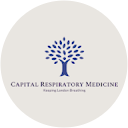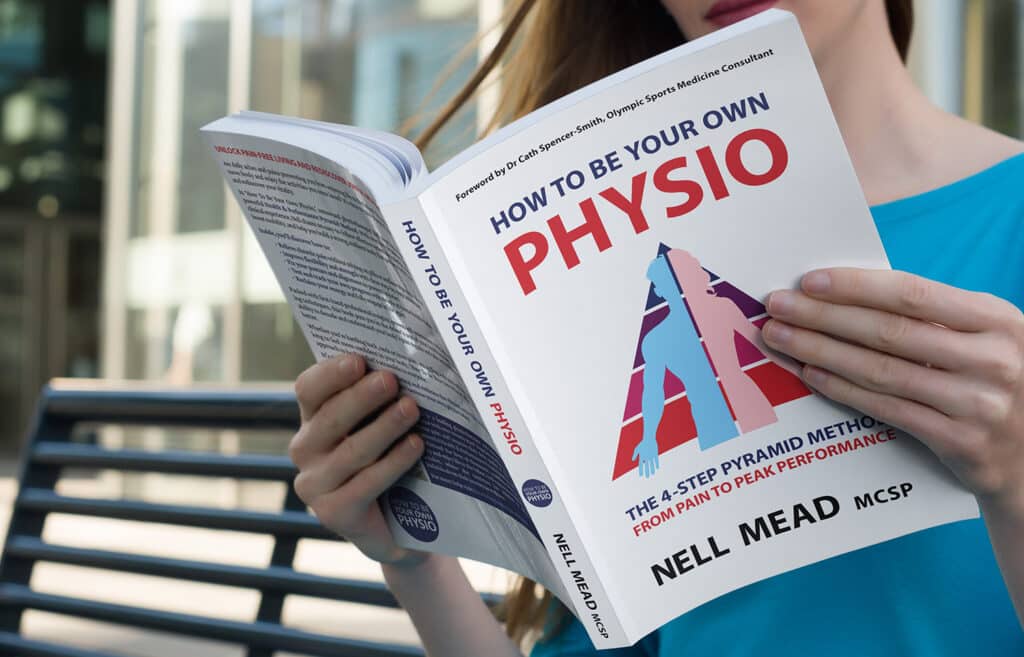Tell me about knees…
The knee complex is not just a simple hinge: it is actually formed of two main joints, plus a relatively minor one:
- the main knee joint or tibiofemoral joint between the tibia (shin bone) and femur (thigh bone), through which you bear weight;
- the patellofemoral joint between the patella (kneecap) and the femur, which acts as a fulcrum for the quadriceps (front of thigh) muscles to pull on the knee and straighten it (I’ve written more about the patellofemoral joint here);
- the superior tibiofibular joint between the tibia (main shin bone) and the fibula (small outer shin bone) which is mainly responsible for assisting the ankle joint as it adjusts to the ground when you walk, but also forms a point of attachment for various knee ligaments including the lateral collateral ligament.
A joint is where two bones meet. The end of each bone is coated with several layers of cartilage, a slippery living tissue which allows the bones to glide past each other when the joint bends and straightens. The joint is then surrounded by a capsule, which works like a tight bag made of ligament to keep synovial fluid within the joint, as this is how the cartilage remains lubricated and how it gets its nutrition.
In order to feed the cartilage, synovial fluid is pumped back and forth like squeezing a sponge in a bucket of water. The pumping action is produced by movement of the joint, particularly weight-bearing movement (which pumps the nutrients into the cartilage) followed by stretching, which reduces the pressure in the capsule, thereby sucking waste products out. The stretching also maintains a gap between the bones, which allows the ends to slide over each other freely and not get stuck or develop wear points.
Is it all about the joints?
Funnily enough, it’s definitely not all about the joints! Apart from the bones, other important structures that have a bearing on the optimal function of the knee joint are:
Muscles that directly impact the knee joint include:
- Quadriceps muscles. The big muscles at the front of the thigh, these flex the hip joint (pull your thigh towards your chest) and extend the knee joint (straighten it).
- Hamstring muscles. The big muscles at the back of the thigh, these extend the hip joint (pull it backwards) and flex the knee joint (bend it).
- Gluteal muscles. The buttock muscles – especially the posterior fibres of gluteus medius – control the hip joint, which in turn controls rotation of the femur, which is crucial for knee alignment.
- Calf muscles. The powerful gastrocnemius muscle, like the hamstrings, is responsible for knee flexion (bending).
Soft tissue in and around the knee includes:
- Ligaments. The four main knee ligaments are the cruciates (anterior and posterior) and the collaterals (medial and lateral). These ligaments all attach to the femur and run down to the tibia, apart from the lateral collateral ligament which runs to the fibula; but they are all orientated differently to prevent the tibia from sliding excessively on the femur in different directions.
- Menisci. These interlocked C-shaped cartilages are anchored to the tibia with strong coronary ligaments, and they provide sockets in which the bumps (condyles) of the femur can sit and twist when necessary. They also provide a lot of shock absorption when we bounce up and down (for example, when we run or jump).
- Fascia. This is the thin, sensitive sheet of connective tissue that surrounds all our tissues, and holds every organ, blood vessel, bone, nerve fibre and muscle in place.
So why do we have knees?
Knees are super important! They help with:
- Ambulation: the powerful muscles around the knee help to propel us forward, and to accelerate and decelerate as appropriate. Without knees, our legs would simply swing from the hip, which is much less efficient (it’s much easier to be a below-knee amputee than it is to lose your leg above the knee).
- Shock absorption: a combination of the meniscal cartilage inside the knee, and muscle control outside the knee, help us to absorb shock when we land, sharing the impact with our feet, ankles, hips and spines. If they’re healthy and well-trained, our knees can absorb enormous loads – imagine the forces going through the knees of a parachutist, a trampolinist or a strongman lifting the Atlas stones!
- Balance: the knees are filled with nerve cells called proprioceptors whose job is to tell your brain where your knee is in space. This is incredibly useful if you want to do things like dancing or any sport that involves twisting and turning, where close control is important – or even if you just want to stand still for a while, without excessive sway or toppling over!
- Kneeling: we don’t always want to be at our full height! Sometimes we want to play on the floor with the kids, or do yoga – or some people might want to pray on their knees. Healthy knee joints have the capacity to allow comfortable kneeling.
- Kicking: whether you’re playing football or swimming, the ability to swing your knees forcefully back and forth is handy!
So why do my knees hurt?
I mean, you know I’m going to say this, but everything has the potential to affect your knee, because everything’s connected – and so, anything could theoretically upset your knees to the point of pain. And equally, just because something’s wonky (for example, if you have scoliosis of the spine) it won’t necessarily affect your knees. The only way to find out whether something is affecting your knee is to test it.
But common biomechanical and structural issues that affect knees are:
- Foot issues: if your foot is weak or the arch tends to collapse when you walk, then this can result in the tibia (shinbone) rotating excessively, which can irritate the knee. Or, if your foot is stiff, its ability to absorb shock might be impaired, so the shock absorption capacity of the knee might be called in to compensate – which might be fine for a while, but not forever.
- Tight or weak calf, hamstring or quadriceps muscles: these muscles directly cover the knee joint and their harmonious patterns of lengthening and shortening are important to maintain the health of the knee joint. If one or more muscle groups are too tight or short, this can cause compression of the menisci or of the patellofemoral joint, resulting in pain or irritation – and if they’re weak, you’re at risk of muscle strains which can result in knee damage due to poor control.
- Traumatic knee injury: a fall or a twist could result in localised damage to the structures of the knee itself, such as a torn ligament or meniscus, or a fractured bone.
- Structural abnormality in the knee: if your kneecap is too high (patella alta) it may be more prone to dislocation; if it’s too low (patella baja) it may be more prone to cartilage damage.
- Stiff or painful hip joints: if the head of your femur (thigh bone) isn’t able to rotate in its socket smoothly, then this can result in impaired alignment of the knee joint, eventually (or suddenly) causing pain.
- Weak or lazy or tight buttock muscles: because of their role in controlling the rotation of the femur (thigh bone) and the pelvic joints, the glutes are a common factor in knee pain. My blog series “the lazy bum epidemic” explores this in a fair amount of detail!
- Rotations through the pelvis and spine: your torso is heavy! If it’s twisted and stiff, rather than balanced and poised over your lower body, then the load your knee has to carry will be uneven. Think how you feel if you carry a heavy bag on one shoulder: after a while, you’ll feel wonky, and some bits of you might start to get a bit achy. “Carrying” a wonky torso can feel a bit like that for your knees!
And is it all about your internal structure and biomechanics? Oh no! There are plenty of other potential criminals here, including but not limited to:
- Poor sleep, chronic stress, dehydration and malnutrition: the lifestyle factors that form the foundation layer of my Health & Performance Pyramid. If you’re not on top of these, then you will be at greater risk of injury or illness than you would otherwise be, because your tissue health will not be optimal. They say you can’t out-exercise a poor diet, which is true; but even more than that, I believe you can’t out-exercise a poor lifestyle.
- Suboptimal movement habits: people who sit for too long, or who spend long periods in awkward positions are definitely more prone to injury than people who are generally more active; and ultimately they may be more prone to arthritis.
- Dodgy footwear: trainers that are designed for fashion rather than function, or that should have been binned a long time ago; stiletto heels that throw you off balance; cheap sheepskin boots that give you no support… all of these things reduce the effective capacity of your feet, increasing your risk of knee pain or injury.
- Underactivity and weight gain: people who are overweight and who don’t move enough have an increased risk of knee injury.
- Overtraining: conversely, a sudden increase in training volume or intensity can cause injury related to fatigue and depletion of nutrients.
- Pain: somewhat unhelpfully, pain in the body can result in protective movement patterns, which can result in muscle imbalance, which in turn can result in more dodgy movement patterns, and ultimately in… more pain…
- Medical issues: systemic disease such as rheumatoid arthritis, genetic abnormalities such as hypermobility or osteochondritis, postsurgical issues such as infrapatellar contracture and saphenous nerve entrapment.
I could go on… and on… and on…
So why should I see Nell Mead for my knee physiotherapy rather than anyone else?
You should call my team and book an assessment because I will look at your injury from all aspects. Where many physios (trained in the biomedical model which is the norm in the UK) will want to work out which structure within your knee is the painful one and make a diagnosis and knee physiotherapy treatment plan accordingly, I start from a different perspective. I’m – at least initially – less worried about what is hurting than about why it is hurting.
Being able to tell you that your meniscal cartilage is a bit worn out or that you’ve strained a ligament is all very well, but it doesn’t necessarily tell us what to do about it to give you the best chance of a long-term solution.
Being able to tell you that the reason your knee is under strain is the fact that your foot is not supporting you correctly gives us a place to start treatment. As is working out that the underlying cause is a hip problem, or a pelvic injury… or even that the problem really is coming from your knee!
So what I do in my clinic is to look at your whole body. I will be looking at you from top to toe. Initially I’ll work out where all your individual kinks and twists are (we all have them!) and then I’ll narrow it down – which of your kinks and twists are most relevant to your knee problem; and how can we use that knowledge to alter the way you move so that you can use your knee optimally? This could include some hands-on treatment to encourage some muscles to relax or others to work harder; and will definitely include some exercises to retrain your movement patterns.
(Of course, if your journey requires further imaging or help from other doctors or therapists, then I am also very happy to help to organise this – I have a great network of experts with whom I work regularly – or naturally I’ll be delighted to work with anyone else you already have in your corner!)
Everyone’s body tells a different story, and every knee problem is different. So if you think your knee issue might be something outside the norm, why not call my team on 0207 175 0150, and let’s work out what’s really going on.







